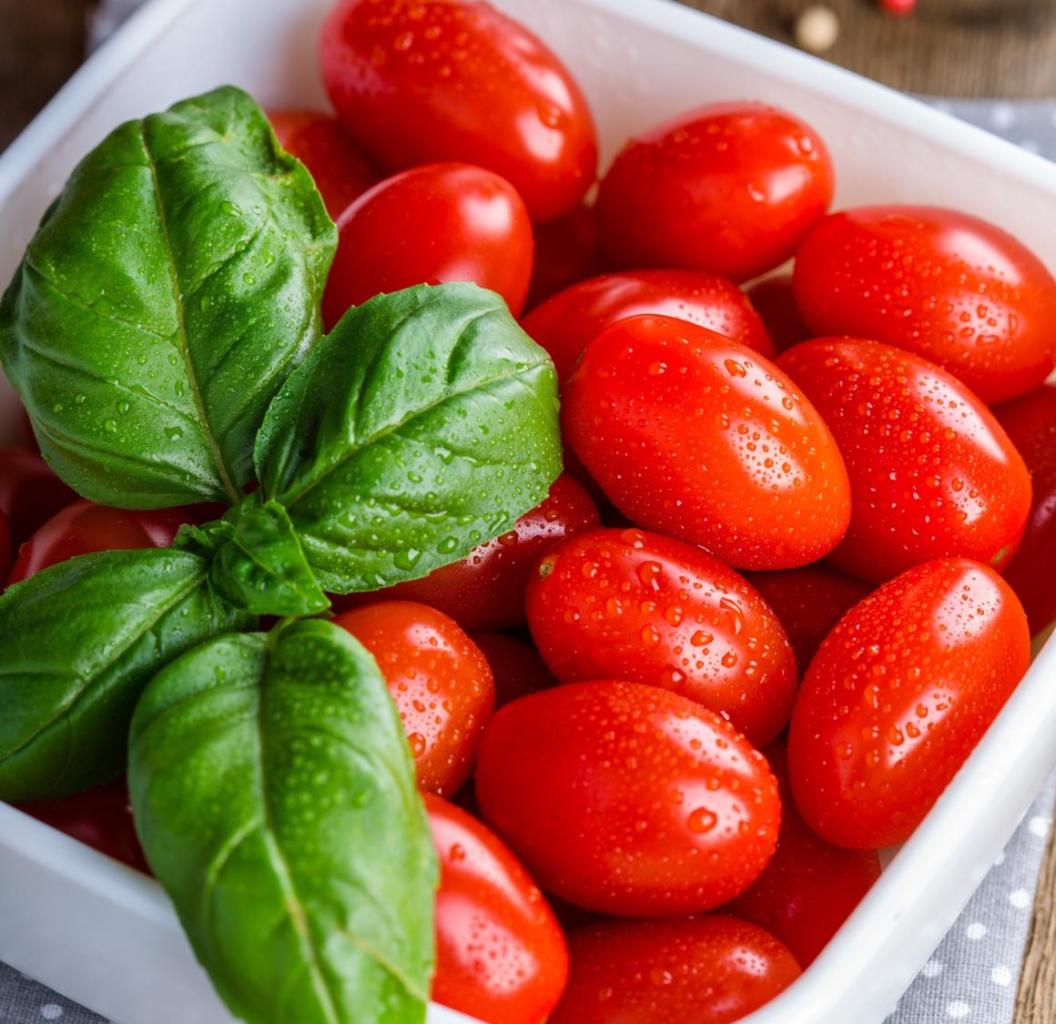
Basil may be one of the most commonly used herbs in the kitchen but, compared with the Scarborough Fair quartet of parsley, sage, rosemary and thyme, it’s not the easiest to grow. The reason for this, of course, is that basil needs warmth not just to thrive but to survive. As it’s not winter, hardy basil has to be treated as an annual that is started afresh each year, either from seed or bought in plantlets. Even then, it needs warm summer weather. In cooler wet spells, especially if grown outside, it’ll sulk, producing fewer and poorer quality leaves.
Because basil likes to be cossetted, I prefer to grow it undercover in a greenhouse or polytunnel. As well as weather protection, this helps produce cleaner leaves free from mud splatter and reduces the risk of slug nibbling. It also means basil can be picked over a longer season. Grown outside, you’ll be lucky to get much of a harvest before early July (possibly earlier if you buy expensive well-developed plants from a garden centre) and will probably find pickings tail off by mid-September. Undercover, on the other hand, the first leaves can usually be picked in early June and the last possibly as late as mid-November. If you’ve no greenhouse space, basil is a herb that’ll do reasonably well indoors in pots or containers. A sunny, south-facing spot is essential, as is regular watering and occasional feeding.
A sunny, south-facing spot is essential, as is regular watering and occasional feeding.
I usually start the first basil in early April. Four to six seeds are sown into cell module trays (small pots will do just as well) and germinated at about 20ºC. Once the seedlings are up, they are left to grow as a cluster, mollycoddled if the weather is cool in a heated greenhouse. By mid-May, they’re large enough to be planted into two-litre pots. These will provide the first modest harvest a few weeks later. Sowings for follow on crops are made at two to three-week intervals until the end of July. These are started in the same way but planted directly into the greenhouse or polytunnel beds rather than pots. Growing in the soil means less watering and no feeding is required. It also, generally, gives stronger plants as well as a longer cropping period.
The reason for sowing fresh batches of basil at intervals is that eventually, even if the leading shoots are regularly nipped off, basil will start to produce a flower head. Once it does, the quantity and quality of leaves will decline. Indeed leaves from a flowered plant have a slightly bitter tang. However you grow it, inside or out, if you want quality basil all summer long more than one batch of plants is required.
My favourite variety of basil is Sweet Genovese, a variety originating in Liguria and commonly used for making pesto. Apart from a few other Italian varieties like Neapolitan, I don’t usually grow the many other types available such as Thai, cinnamon, purple or lemon. These seem neither as flavoursome nor as good growers as the Italian types. From what I’ve seen, this is particularly likely to be the case if you grow outside. Where conditions are likely to be tricky Sweet Genovese and similar varieties are most likely to ensure success.
August Events
Open House and Wildlife Garden
Saturday 21 August, Acomb.
Join Emma, local wildlife gardener and hedgehog champion, for a look around her garden and Hedgehog Hospital in Acomb, York. The event is free, but
donations are welcome.
Email emmakatefarley@hotmail.com to check ahead of your visit.
Growing Organic Vegetables All Year
Saturday 7 August, Stillingfleet Lodge Gardens
Join our columnist, Tony, on this half-day course where you will learn how to get the most out of your vegetable garden and have fresh vegetables all year round. The course is suitable for anyone starting out and for more experienced gardeners who wish to grow their plants more sustainably.
Visit stillingfleetlodgenurseries.co.uk to book.









Add a comment